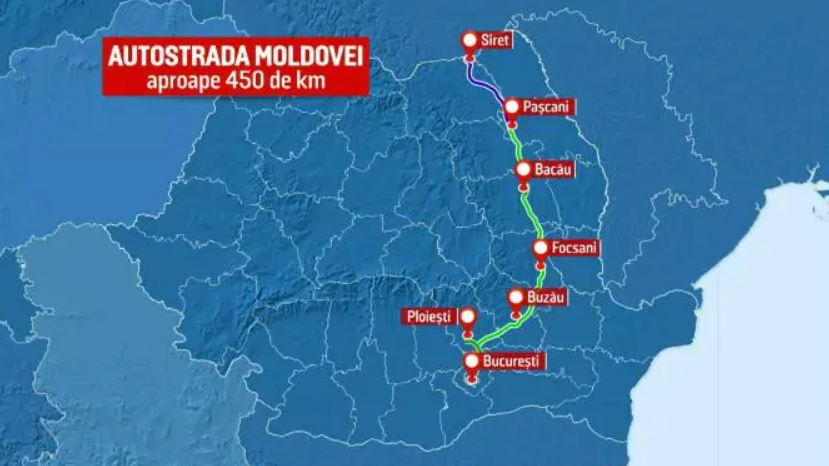Romanian Developments triggered by the war in neighbouring Ukraine
At the end of last year, the Romanian government prolonged the licensing requirement for imports of cereals (wheat, maize) and oilseeds (rapeseed, sunflower) from Ukraine until 30 June 2024. Two more agri-food products have been added to the list of goods for which importers need now licenses: flour and sugar.
On the other hand, efforts are being made to improve transport infrastructure in Romania, especially road infrastructure. In the context of the war in Ukraine, the construction of the Moldova* Motorway has become a priority.
If in other years the high-speed roads in Transylvania received the largest allocations, in 2024 the Moldova Motorway (A7), stretching around 400 kilometres from the north to south of Romania, receives the most money.

The Transport Ministry's budget this year is around 30 billion lei higher than in 2023 (approximately €6 billion higher). Much of the money will be used for motorway and expressway works. The largest amount has been allocated to works on the motorways in the eastern part of Romania (Moldova region), namely: Bacău-Focșani, Bacău-Pașcani, Buzău-Focșani and Ploiești-Buzău.
The A7 stretch between Pașcani and Ploiești has secured European funding through the National Resilience and Recovery Plan (PNRR) of around €3 billion, with the rest of the costs to be covered by the Romanian state.
Work on the A7-Moldova motorway must be completed by 2027 to avoid losing European funding, and will eventually link the Black Sea via the A2 and A0 motorways to motorways in Ukraine (through Siret customs) and on to Poland, where it will intersect with the most important infrastructure project in Central and Eastern Europe - the "Via Carpatia", a motorway linking the Mediterranean, Black Sea and North Sea. The corridor will cross Greece, Bulgaria, Romania (via Calafat, Timișoara, Arad-Oradea), Hungary, Slovakia, Poland and Lithuania. Both "Via Carpatia" and the Moldova Motorway, which is part of the Pan-European Corridor 9, will improve freight traffic from Constanta (port) and Bucharest with the rest of Europe.
Freight traffic to and from Siret customs has been jammed since the war in Ukraine, as this route is one of the busiest for the road transport of grains. The funding from the NRRP for the A7 Moldova Motorway is practically putting the region of Moldova back on the map, with a potentially significant impact on economic development.
Works on port infrastructure (Constanta and Galati) are also ongoing, as Romania stated on various occasions that it aims at doubling the transit capacity for Ukrainian agricultural products. These works are focused mainly on improving the ship-to-ship transhipment capacity in the Port of Constanta, making the Sulina Canal (Danube’s RO branch to the Black Sea) navigable 24 hours/day, increasing the number of pilots guiding boats on the Sulina Canal, and recently also for building up a smaller port on the Poarta Albă-Midia Năvodari Canal which would facilitate the berthing and unloading of cargo ships and relieve the pressure on Constanta port.